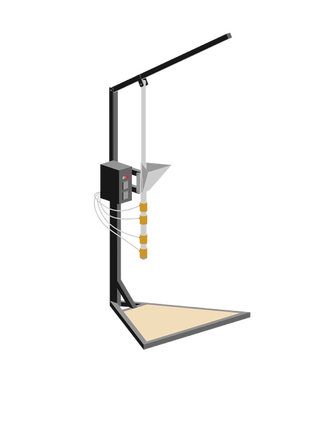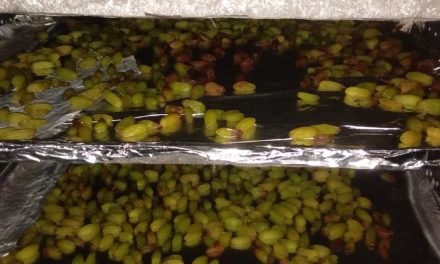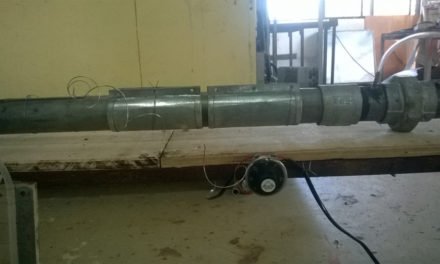iels Bohr said that an expert is someone who has made every possible mistake in a very narrow field. This idea always sets me in the right mindset as I start working. If I am not making mistakes, I am either not doing enough or am not paying attention. Here is a list of all the things I learnt fabricating my first machine: the plastic injection molding machine, design by Dave Hakkens from Precious Plastic.
Starting out:
I spent some days distracted by other works before really getting to it the day before Yogesh came to discuss the project. Hence, I was shaky for a few days before really getting my ground in discussions of the project, the design and the materials. I was incredibly impatient with my partner about getting the materials to start working. Our communication was not successful as I have not thought carefully and others either couldn’t express their opinion in English under pressure or couldn’t stand my hot temper. Luckily I got it together the day before Yogesh came, thought everything through and discussed for 2 hours with Supriya. This made our meeting the following day successful.
Ideas:
About the product, I thought of colorful glue sticks for the glue gun to doodle in 3D, and Yogesh thought of scientific toys. About machine hacks, I thought of using Fresnel lens to heat the column and save power, and Yogesh thought of making the machine compact by using a mechanism like the noodle maker. Eventually, we decided to carry on with Dave’s design as a baseline.
Getting materials:
We changed quite a few things from the bill of materials Dave provided. First with the electronics, we got a thermostat instead of a PID controller with a separate thermosensor. Then with the machine parts, as the shop didn’t have the tube and bar size we wanted, and as the workshop didn’t have enough of the square tubes the size we wanted. Eventually this did create problems, first with fitting the tube onto the frame, because the frame was 2 cm bigger than the design, then with fitting the band heaters on the tube as the band was 2 mm bigger than the tube. In the end we solved the tube problem by using a different connector system and we solved the band heater problem by using scrap metal in the shop to fill in. We did change the lever from a square tube to a pipe as well, but this did not really effect the design. The length of our bar and tube also wasn’t exactly what Dave gave. It was 600 and 550 mm instead of 585 and 530 mm for the bar and tube respectively. Honestly 2 cm does not matter.
We changed quite a few things from the bill of materials Dave provided. First with the electronics, we got a thermostat instead of a PID controller with a separate thermosensor. Then with the machine parts, as the shop didn’t have the tube and bar size we wanted, and as the workshop didn’t have enough of the square tubes the size we wanted. Eventually this did create problems, first with fitting the tube onto the frame, because the frame was 2 cm bigger than the design, then with fitting the band heaters on the tube as the band was 2 mm bigger than the tube. In the end we solved the tube problem by using a different connector system and we solved the band heater problem by using scrap metal in the shop to fill in. We did change the lever from a square tube to a pipe as well, but this did not really effect the design. The length of our bar and tube also wasn’t exactly what Dave gave. It was 600 and 550 mm instead of 585 and 530 mm for the bar and tube respectively. Honestly 2 cm does not matter.
Building:
There were enough parts to the machine that it’s necessary to plan ahead. I was impatient and jumped into the workshop before figuring the plan. I made a mistake of cutting the bar down to the length of the tube and had to get help from Aditya and Vinayak to weld it back on. We used the wrong rod for arc welding but it was ok. I then cut all the pieces for the frame. I had the angle of the equilateral triangle base wrong and argued with LPJ about it. Because we didn’t have 60 degrees on our cutter, I had to get help from Aditya to hand cut the parts. Welding all of them together was done by Vinayk. At this point, due to the amount of new things in the workshop and all kinds of new people approaching me everyday, I felt shaky and failed to communicate. I went with LPJ to buy metal strips in the village and we found a pipe instead of a tube for our lever. At this point I was also learning Solid works and Fast cam to make files for the plasma cutter. I learnt that it is important to make the design constrained enough that it doesn’t change shape by moving any part of the picture. This can be done by using the mirror function, centerline, and smart dimension for length and angle. Other things were procedural and can be quickly guided through by Subir. The plasma cutter machine has problems itself, with the voltage being unstable and not sufficient to 230 V on most days after 9 A.M. We made some pieces however and tried MIC gas welding with Shubham. We didn’t do that well, but I at least I learnt to grind and I learnt that the 2/4 phase knob on the MIC was for the way the metal strand would come out, either by pressing continuously or by pressing start and stop separately. The most difficult part to do was welding some connectors on the tube and the bar to screw on to the frame. Aditya suggested to use scrap parts instead of cutting from the plasma cutter. Some discussing with Subir was done before we decided on welding 4 identical connectors on to the tube to fit the inside of the square tube. Along the way I also learnt to drill. The workshop can get pretty hectic however, with the scales markers and pencils lying around, drill bits and grinders to be shared, tighteners to be broken, power to be off, clamps to be nonexistent or merely me not knowing the basics. I cut the hopper in one piece to avoid welding, and instead bended it. The gaps were filled with Mseal and we used oil to avoid adhesion to the tube. Again Vinayk helped to weld the connectors onto the tube and the hopper was then screwed on to the connectors. Cutting and fitting was all done by him. Then we were ready to fit on the band heaters. After some tension, finding aluminum sheets and tossing around different solutions, we solved it and started melting plastic.
In short:
Working in the workshop is basically learning to troubleshoot. Plan as well as possible, but there will always be things unexpected. The more experienced the better one can deal with them. As a beginner, I wish I could have planned better and had more resolution to work on my own before learning to work with the confusion and tension of others’ attention on me. Something really useful could be drawing a 3D design in Solidworks myself before coming in the workshop while elucidating the steps and tasks to be done within each day. I could also have built models out of paper to have a better sense for working.
The problem:
The problem we came to in the end was in the nozzle, which in a way Supriya foresaw the second day as she asked an insightful question: when poured into the column, why don’t plastic pellets fall out? We were working on ways to stop the pellets from falling, to heat all the plastic in the column, to extrude out as much plastic as possible, and to effectively transfer that to a suitable mold. The nozzle used my Dave hasn’t work so well in melting the plastic buried in the middle and our own nozzle also hasn’t worked well enough in extruding into the mold. It takes some experimenting with the amount of plastic put in, preheating time and making it as air tight and precisely placed as possible with the mold to prevent premature hardening, but the final product is in sight, whether with the ready-made mold or with a newly designed one for a glue stick or a tile. I short stopped the project before leaving but I hope my colleagues will get it together soon. The other problem which we haven’t really thought about was in the smoky band heaters. It has been burning every time we heat them up at the contact of the metal and the wires. This is not the case in the sample rubber molding machine we bought. For this too, I hope my colleagues investigate more into the capacity of the band heaters, the sensor system and the material of the wires. It would be ideal if smoke can be avoided.





